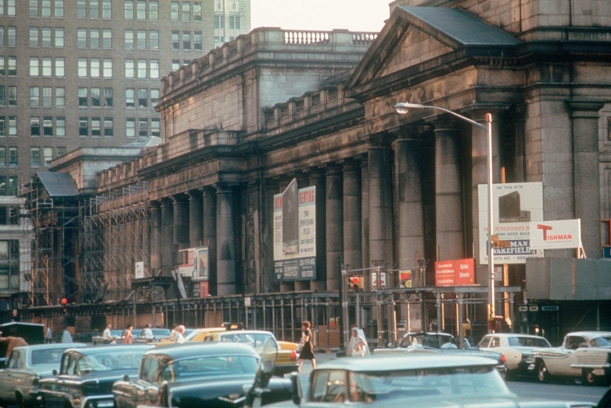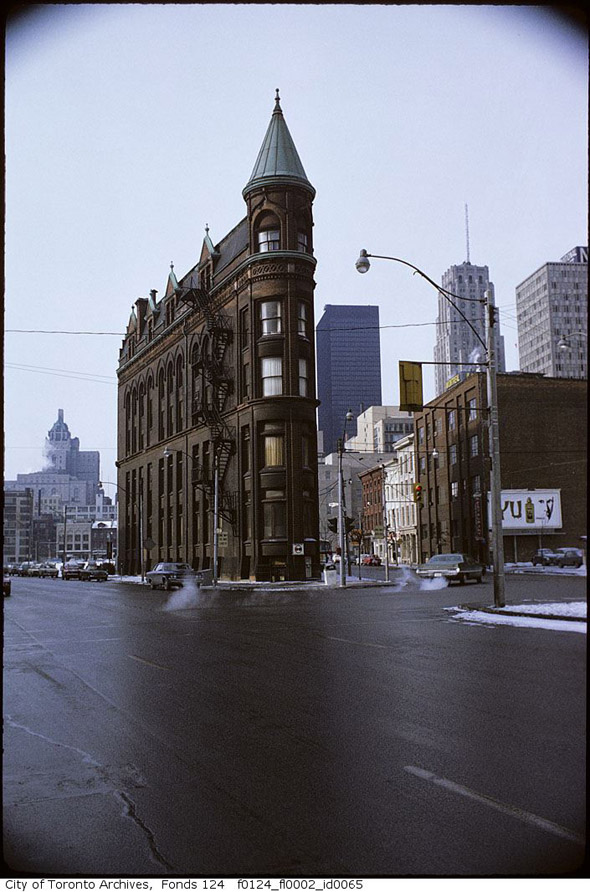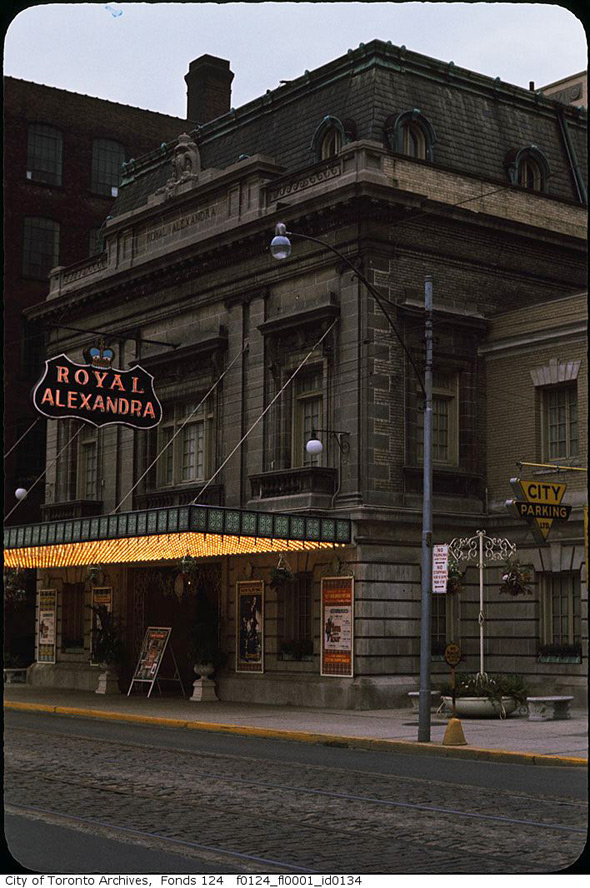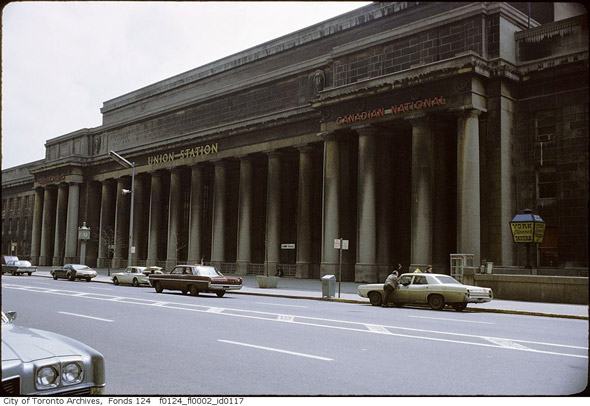syn
Senior Member
To move the buildings would be in the ten of millions. It's not realistic particularly when Mirvish sold most of his available property. Bathurst and Bloor would have been ideal.
What about just the outer facades then?
To move the buildings would be in the ten of millions. It's not realistic particularly when Mirvish sold most of his available property. Bathurst and Bloor would have been ideal.
To move the buildings would be in the ten of millions. It's not realistic particularly when Mirvish sold most of his available property. Bathurst and Bloor would have been ideal.
I just got back from a trip to Rome, and after seeing 2000 year old buildings, the value of a 100 year old cubic warehouse seems ridiculous to me.
You wouldn't be moving the entire building. You would be carefully disassembling the facade only - brick by brick - cornice by cornice - and reconstituting it on another project sitemaps. The costs would not be prohibitive at all because you would be recycling material - in fact if a developer is going for Leed certification they could get credits for recycling material. Also the facades do not have to be moved to property owned by Mirvish. I am sure he could partner with many developer's downtown to make such a move happen. There are many parts of downtown that could benefit by having these heritage buildings grafted onto the streets-cape.
None of that is finalized yet ushahid, but the canopy will likely be fritted glass over a curved frame. Google Fondation Louis Vuitton Frank Gehry if you want to see another one of his projects with a similar cladding.
42
adma:
You have a point re: facist architecture, but let's not accuse others of being an amateur. And re: Rome - I can't help but wonder how the Romans themselves felt about tearing down chunks of their city for the sake of civic improvement - and what we are worshiping is but the Nth iteration of what's on the site. In that context, it is no different from what's happening in this city 2000 years later.
AoD
Pennsylvania Station was designed by McKim, Mead, and White in 1902. McKim, a Beaux-Arts educated architect and co-founder of the American Academy in Rome, was the lead designer on the project which was a grand display of his idiosyncratic Beaux-Arts Classicism. He draws inspiration from the great train stations of Europe, the Baths of Caracalla, John Soane’s Bank of England, and surely myriad other sources, all artfully combined into a monumental pink granite structure. It was a testament to the our technological prowess, craftsmanship, and artistry. It was a monument to our culture; a station scaled to the ambitions of a country at the peak of its power – a modern Rome. And indeed, at times it seemed that all tracks lead to New York – or, to be more specific, Penn Station. It was to be a gateway to the city.
But times change. And cities change. By 1963, New York was a very different place and Penn Station was no longer the gateway into the city. New highways and air travel gave travelers more, sometimes better, options. And while automotive infrastructure was being built by governments, privately owned railways were going bankrupt and bleeding passengers. In a time of high speed and efficiency, Pennsylvania Station was a decadent, inspiring and expensive masterpiece. As it fell into decay and disrepair, the owners of the railroad believed they had no choice but to sell the rights to build on their valuable property, making it possible for a new, modern, and incredibly ugly Madison Square Garden to rise where Penn Station stood, while the while the waiting rooms, ticketing areas, and train concourses were pushed underground. The opposition to the demolition was led by a small but local group, but at the time the city was powerless to stop it. And it seems that few New Yorkers held the station in high regard because although the Penn Station that exists in the popular imaginary looks like this:

The station was quite a bit worse for wear in 1963:

...
By the time of its demolition, Penn was full of unsightly newspaper kiosks, advertisements, and an jarring, modernist ticket counter that drastically changed the circulation through the building’s waiting room. But that is not the Penn Station we remember. There’s a line in The Eternal Space about a soldier who died in World War II: “how perfect he seems in death.” The same could be said about the station. Penn Station lives on through widely distributed photographs depicting the station at the peak of its monumental grandeur, such as those seen at the top of this post. The Penn Station we miss–even those of us who weren’t even a gleam in our father’s eye at the the time of its demolition–is one that hadn’t existed for a long time. And yet, these photos create a longing.




What we have down at King is a landlord who has not made the most of what he has because he wants to tear it all down. We shouldn't allow this. What he wants to do is outside of the official plan, in violation of heritage guidelines, and would - if approved - set a disastrous precedent for the preservation of every other warehouse in the King-Spadina neighbourhood.
I really love the Gehry design, but there's so many problems with this proposal that I can't see the city saying 'yes' to this. It would just be poor planning to allow it in this epoch.
Speaking of Penn Station, the Smithsonian Magazine just ran an article on Penn Station and historical nostalgia to commemorate the 50th anniversary of the station's demolition.
I can't help but feel a similar degree of nostalgia at play here. The grim fact is that, designation or no, few Torontonians recognized or celebrated these warehouses before Mirvish proposed demolishing them. People may not have been hostile to them, either, but they were just a mundane, banal part of everyday life. Now we're talking about them and terra-cotta finishes like they're the most significant architectural legacy left in the City.
The Smithsonian's point wasn't that Penn Station deserved to get demolished or something, it was that people nostalgize it in its peak. By the 1960s the PRR was carrying less than a 1/10th of what it was carrying a few decades before, the railroad was verging on bankruptcy and the original station was extremely expensive to maintain.
In hindsight, we can all look at Penn Station's impressiveness and MSG's utter... ugliness and think 'wow, what a bunch of idiots.' It wasn't quite the case of aesthetically oblivious vandals tearing down an otherwise perfectly suitable building, though.
Likewise, you can conspiracize that the current buildings haven't been used appropriately because Mirvish wants to demolish them, but you're ignoring the impracticalities of the current structures. It's ridiculous to not have accessible street presences, for instance.